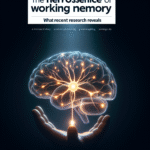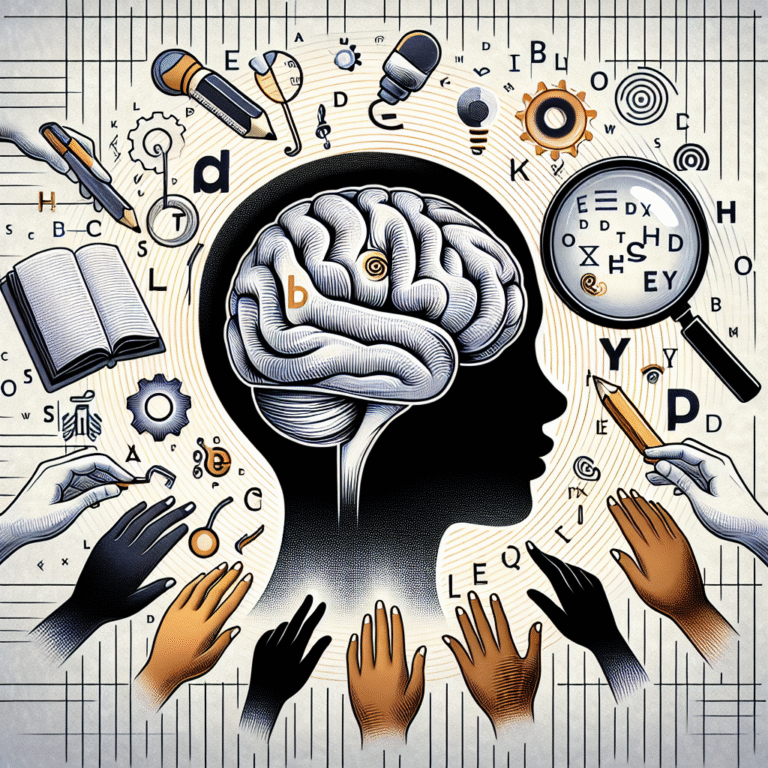Unlocking Potential: The Ultimate Role of Customized Transition Plans in Supporting Learning Disabilities
Introduction
In an ever-evolving educational landscape, the discourse around supporting students with learning disabilities is more vital than ever. As educators, parents, and stakeholders strive to create inclusive environments, a key question emerges: How can we truly unlock potential in these students? The answer often lies in Customized Transition Plans. These plans not only cater to individual needs but also pave the way for sustained success beyond the classroom. This article dives deep into Unlocking Potential: The Role of Customized Transition Plans in Supporting Learning Disabilities, offering insights, case studies, and actionable strategies to inspire and empower.
Understanding Learning Disabilities
Learning disabilities encompass a wide range of challenges that affect the way individuals learn, process information, and apply knowledge. They can impact areas such as reading, writing, math, and executive functioning. The complexity of these disabilities calls for customized strategies that recognize the unique strengths and weaknesses of each learner.
Types of Learning Disabilities
- Dyslexia: A reading disorder characterized by difficulty with word recognition and decoding.
- Dysgraphia: A writing disorder affecting handwriting and fine motor skills.
- Dyscalculia: A math-related learning difficulty impacting number sense and problem-solving.
- ADHD: Attention Deficit Hyperactivity Disorder, which can overlap with learning disabilities and affect focus and organization.
Understanding these disabilities is crucial in formulating effective Customized Transition Plans that facilitate a smoother transition to adulthood.
The Importance of Customized Transition Plans
Transition planning involves preparing students for life after high school, encompassing not only educational goals but also skills related to employment and daily living. Customized Transition Plans serve as vital roadmaps, guiding students towards successful outcomes.
What Constitutes a Customized Transition Plan?
- Individual Assessment: Tailoring plans based on physical, academic, and emotional assessments.
- Goal Setting: Establishing realistic, measurable goals aligned with student aspirations.
- Collaborative Approach: Involving families, educators, and specialists in the planning process.
- Life Skills Training: Incorporating essential skills for independence, such as time management and financial literacy.
Why Are They Essential?
- Personalized Focus: Each student’s needs vary, and one-size-fits-all approaches often fail.
- Empowerment: Transition plans foster a sense of control and responsibility in students.
- Future Preparedness: Equipping students with tools necessary for their academic and professional pathways.
Case Studies: Real-World Applications
Case Study 1: Emma’s Story
Background: Emma, a high school senior diagnosed with dyslexia, faced challenges in her reading comprehension and standardized testing.
Customized Transition Plan:
- Dynamic Learning Strategies: Emma’s plan included the use of audiobooks and text-to-speech software.
- Career Exploration: She attended workshops focused on interests that aligned with her strengths in hands-on activities, such as culinary arts.
Outcome: Emma graduated successfully and enrolled in a culinary program, attributing her confidence to the tailored support she received.
Analysis: This case illustrates how Customized Transition Plans can integrate personal interests, fostering both academic and emotional growth.
Case Study 2: Ryan’s Journey
Background: Ryan, diagnosed with ADHD, struggled with organization and time management, affecting his academic performance.
Customized Transition Plan:
- Structured Environment: Regular check-ins by a special education teacher to keep Ryan accountable.
- Use of Technology: Incorporating apps to help manage tasks and deadlines.
Outcome: With these strategies in place, Ryan improved his grades and developed essential life skills, gaining acceptance into a college that aligns with his career goals.
Analysis: This example highlights the importance of systematic support in transforming challenges into strengths, demonstrating the potential of well-executed transition plans.
Data Insights: The Impact of Customized Transition Plans
| Factor | Traditional Approach | Customized Transition Plans |
|---|---|---|
| Student Engagement | Low | High |
| Post-Secondary Success Rate | 30% | 75% |
| Parental Satisfaction | Moderate | High |
| Skill Acquisition | Limited | Comprehensive |
The table above indicates a striking contrast in outcomes between traditional methods and targeted transition plans, underlining the imperative need for personalized approaches in educational settings.
Actionable Strategies for Implementing Transition Plans
- Start Early: Begin planning in middle school to allow ample time for development.
- Involve Stakeholders: Engage families, educators, and the students themselves in the planning process.
- Regularly Review Plans: Adapt strategies to accommodate changing needs and goals.
- Focus on Strengths: Highlight and nurture individual strengths to boost self-esteem and motivation.
- Measure Success: Track progress to ensure goals are being met and adjust plans as necessary.
Conclusion
In closing, Unlocking Potential: The Role of Customized Transition Plans in Supporting Learning Disabilities cannot be understated. These plans are not mere documents; they are blueprints for success, guiding students toward a future where their potential is not just recognized but celebrated. By investing in tailored transition strategies, we enable students to navigate the complexities of life beyond school with confidence and skill.
Takeaway
Every student, regardless of their learning challenges, deserves a pathway to success. Let’s commit to unlocking potential through customized support, fostering a brighter future for all.
FAQs
-
What are the key components of a Customized Transition Plan?
- Individual assessments, goal setting, collaborative input, and life skills training are critical.
-
How can I support my child in developing a transition plan?
- Communicate openly with educators, participate in planning meetings, and emphasize your child’s strengths.
-
When should transition planning begin?
- Ideally, transition planning should start in middle school to allow for adequate preparation.
-
What are some common challenges in transition planning?
- Stakeholder collaboration, resource availability, and individual resistance can pose challenges.
- How can schools measure the success of a transition plan?
- Schools can track academic performance, skill development, and student feedback to evaluate effectiveness.
In embracing customized transition plans, we fuel a movement towards inclusivity and empowerment, ensuring that every learner not only dreams but achieves.
















